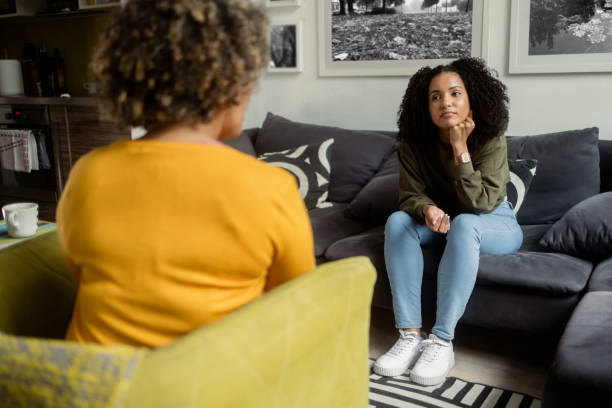
Living with ADHD can be challenging, especially when it coexists with other conditions like addiction. ADHD affects a person’s ability to focus, stay organized, and manage impulses. These symptoms can make individuals more susceptible to addiction, as they might turn to substances to cope with their struggles. However, understanding the connection between ADHD and addiction and knowing the steps you can take to manage your ADHD can pave the way for a healthier, more fulfilling life.
ADHD and Addiction: The Link Explained
ADHD and addiction often go hand in hand. Research shows that individuals with ADHD are more likely to develop substance use disorders compared to those without ADHD. The impulsivity, risk-taking behavior, and difficulties with emotional regulation associated with ADHD can increase the likelihood of turning to drugs or alcohol as a way to self-medicate or escape feelings of frustration, anxiety, or depression. Recognizing the link between ADHD and addiction is crucial for effective treatment. It’s not just about treating the addiction; it’s about addressing the underlying ADHD symptoms that may have contributed to the substance use in the first place. By doing so, individuals can develop healthier coping mechanisms and reduce the risk of relapse.
3 Major Steps You Can Take to Help Treat Your ADHD
- Seek Professional Help: Comprehensive Treatment Plan

When you look at the symbiotic relationship between addiction and ADHD, it is clear that ADHD management is paramount in disrupting the cycle. The first and most important step in managing ADHD is to seek professional help. A comprehensive treatment plan that includes therapy, medication, and lifestyle changes can be incredibly effective. Cognitive Behavioral Therapy (CBT) is often recommended for individuals with ADHD, as it helps them develop better organizational skills, improve emotional regulation, and manage impulsivity.
The cognitive aspect of CBT addresses patterns of thought that are detrimental to managing ADHD. These include comparisons between self and others; projecting others’ feelings without evidence; all-or-nothing (or black-and-white) thinking, which can lead to overgeneralizing, or fixating on one small piece of the puzzle as if it is more significant than it is, and more. These thoughts are addressed by challenging their narratives and replacing them with another story. For example, if you are telling yourself that the people in your life resent you because of your ADHD, you learn to correct yourself when that thought arises. You might say, “I am projecting my frustration with myself onto others; nobody in my life has expressed anger or stopped making plans with me.” You may use journaling to reveal and better understand your thoughts and feelings.
The behavioral aspect of CBT addresses impulsivity; difficulty regulating attention and/or the time spent on a task or activity. With the guidance of a professional, you can learn to set S.M.A.R.T. goals. These goals are Specific, Measurable, Achievable, Realistic, and Timely. Often, people who have ADHD struggle to know where to begin, or feel overwhelmed by their projects and goals. By using the SMART technique, you can break tasks into smaller pieces, and determine ahead of time how you will know what has been achieved, and when it is reasonable to have your goal completed. You may find that you have goals around being on time, remembering what you need to have with you, and making and keeping plans. You may learn how to utilize specific tools to help you keep track of the things you need to remember. This might include a physical calendar, a place where you will see it every day, alerts and alarms on your phone, a day planner, and/or checklists.
In our Woodland Hills ADHD therapy sessions, we determine the thoughts and behaviors that need to be addressed with ADHD, and also where these overlap with or lead to addiction behaviors. Sessions for both in-person and online ADHD therapy can include revisiting past incidents and recognizing where those patterns developed. Some patterns will need more adjusting than others. Some issues won’t be clear until you sit with them and explore them in a safe environment. Your tactics for addressing and adapting your thought processes and behaviors will change over time as you do. This is why regular care can be a great cornerstone in navigating life and ADHD and addiction.
- Develop Healthy Coping Mechanisms: Building Resilience

Learning and implementing healthy coping mechanisms is vital for managing ADHD, especially in the context of addiction. This can include mindfulness practices, relaxation techniques, and stress management strategies. Mindfulness, for example, can help individuals become more aware of their thoughts and behaviors, allowing them to pause and make more deliberate choices rather than acting on impulse.
Mindfulness is the practice of remaining in the present moment. This happens in two pieces: developing tactics that keep you from thinking about the past or the future, and learning how to be comfortable in whatever state you find yourself in. A great trick to rooting yourself in the present is to use your senses; what can you see, smell, taste, hear, and touch? Some people use whatever is in front of them to hold onto or to look at, others carry a specific object like a worry stone that they can access when needed.
When you are first experiencing distress, asking yourself to identify something for each sense can help your mind focus back in and help your nervous system relax. “What can I see? I see a pen. What can I hear? I hear the radio. What can I taste? I taste my gum. What can I smell? I smell coffee. What can I feel? I feel the material of my sweater.” You can repeat this process, or you can choose to focus on one specific sense that is helping you to settle back into the present.
In mindfulness, we can observe our present surroundings and situations without judgment. We let our thoughts and feelings arise and we don’t fight or analyze them. Through practicing this acceptance, we can feel more comfort in discomfort. This is why this second aspect of mindfulness is so important. It is far easier to ground yourself in the present if you can handle being there.
Relaxation techniques help to establish a baseline of emotional regulation. This means that when triggering incidents and events increase stress, the stress level wasn’t already high to start with. The more time you can spend in a zone of regulation, the more readily your nervous system will default to that state after something upsets you. Sometimes, we mistake relaxation for silence and stillness. If this works for you, then it is a great method! However, relaxation can also look like going for a walk, listening to a podcast, playing a sport, drawing, reading, hanging out with loved ones, and more.
While regular habits that decrease your stress are beneficial, it is also important to determine how you will respond when things go “wrong”. Healthy coping mechanisms don’t only build a solid foundation of emotional regulation but also enable us to handle the way it feels to miss a deadline or forget an important date. These habits also support recovery from the day-to-day fatigue of analysis paralysis, busy thoughts, and playing catch-up. What will you turn to when you’re unsettled by something? Will you move your body, consume media that comforts you, and reach out to a loved one?
Sometimes, we feel that the only way to cope with our anxiety is to participate in activities like yelling, HIIT, a long run, or anything else that wipes us out. By all means, a good HIIT workout that pumps you up, promotes endorphins and doesn’t injure you can be a great activity, if you enjoy it. But if you don’t, then it is not likely to be the best coping mechanism for you to implement. You can clear your head and produce endorphins with a long walk, a good conversation, or going for a drive and singing your favorite songs with the windows down.
- Create a Structured Environment: Organization and Routine

People with ADHD often struggle with organization and time management, which can lead to feelings of overwhelm and frustration. Creating a structured environment can help mitigate these challenges. This involves establishing a daily routine, setting clear goals, and breaking tasks into smaller, manageable steps.
Something we sometimes hear from our patients who attend ADHD therapy in Woodland Hills is that if they were able to create a routine, they wouldn’t need help with their ADHD. Though this is often said as a bit of a joke, there is an underlying truth to the frustration of trying to organize because your brain struggles to organize. If you were diagnosed with ADHD as an adult, you may have spent your entire lifetime scrambling in some way or another, wondering why there always seemed to be a detail missed or a deadline forgotten. The trick to building new habits is to start with the thing you know you will remember or the thing you know you will do. This is called habit stacking. For example, if you always make coffee in the morning, and you want to make sure you review your day plan, put your planner on the counter with the coffee maker.
You might have a lifestyle where no two days are the same, and this can feel like an obstacle when it comes to setting your daily routine. In that case, set the things that don’t change – you will wake up and you will go to bed every day. Wake up at the same time every day. This might mean that you wake up on time for your one earliest day, and early for the rest of them. On the days when waking up in time for your earliest start of the week buys you extra time, you can reserve space to take a fitness class, journal, meditate, do laundry or other household tasks, or run errands. Something else you will do every day is brushing your teeth; how can you habit stack so that brushing your teeth in the morning helps you prepare for your day, and brushing your teeth before bed helps you prepare for sleep? These little adjustments can make a big difference over time, as they help us to fortify a framework around our daily lives.
A component of creating a structured environment is creating a literal physical environment that benefits us. Have a hook or table by the door for your keys. Have a shoe rack there, outdoor wear, and an umbrella for those rare monsoon days. Put the things you need to remember where you can see them. Buy two of some things; it doesn’t hurt to have a deodorant for your bag as well as one in your medicine cabinet, or on your dresser. Be prepared to make mistakes and learn from them. How can you set up your closet and dresser so that deciding what to wear doesn’t delay your day? Can you choose five outfits for the week and hang them assembled to take the guesswork out of your mornings?
Conversely, are there clothes you never wear filling up your storage space and getting in the way when you’re deciding what to wear? Like any set of belongings that you might want to purge, you may feel that your clothing is overwhelming and you don’t know where to begin. Take it one drawer at a time, or one color in your closet at a time. It is far easier to look at everything you have hanging in front of you and pull out everything green than it is to think of tackling every item right away. If you get through one color quickly, you can move on to another, and so on.
This kind of process can be applied to all the areas of your home, your vehicle, and your work environment that leave you searching and sorting through things instead of being able to reach for what you need. The fewer items you have to handle, the less likely you are to be distracted, or to feel overwhelmed. When you set up your routine to provide you with more time and mental space, you are better able to regulate your emotions and experience success, thus helping you steer clear of coping mechanisms such as substances.

The guilt and shame associated with both ADHD and addiction can feel insurmountable at times but do not have to be permanent conditions. This is something I know for sure as an ADHD Counselor in Woodland Hills who treats addiction. Because both ADHD and addiction can make us feel as though there are forces greater than us impacting our ability to move in the direction we want to go, easing the symptoms and behaviors of each one helps us avoid the other. This is possible with diligent work and consistent belief in yourself. You don’t need to constantly move forward, so long as you know that you are deserving of putting in the work and enjoying the rewards of your efforts.
ADHD Treatment at Embracing You Therapy
ADHD symptoms can have a profound impact on our adult lives if not properly managed, affecting both our work and personal relationships. At our Woodland Hills office, our ADHD Treatment is designed to pinpoint the unique challenges of your ADHD brain and develop practical, easy-to-implement strategies that seamlessly fit into your daily life.
Contact us today for your complimentary 20-minute phone consultation with our Admin Team today!



